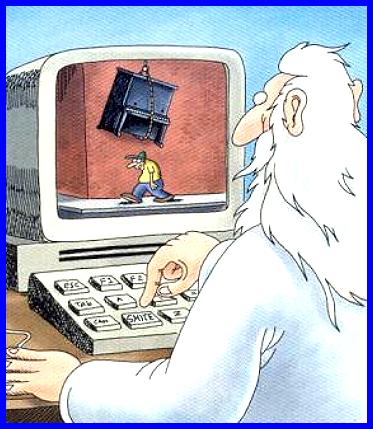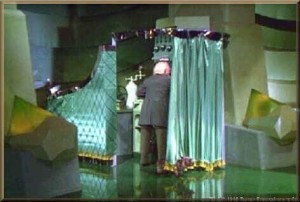A rather smart chap I recently met by the name of Tommy ( @tommyismyname ) asked me for my opinion on a recent blog post of his regarding whether you love or hate facebook. This does require a name and email to download his FB report so be forewarned, but it is worth the read as Tommy is a very sharp knife in a drawer full of dull cutlery!
So do I hate or love Facebook? Neither answer works for me really. For what originally started out as a way to meet chicks for a couple horny college kids, its a smashing success. Whatever you believe, you absolutely have to respect what Facebook is – A Social Media Leviathan.
Personally I don’t use it, but I’m fascinated by its current power and future potential.
Well, contrary to many other social platforms, Facebook has found one of the keys to success in B2C relationships – create an addictive positive experience. The constant flow of human drama from friends and friends of friends is reality TV served up in ADD fashion about your favorite people, your friends. It has taken gossip to a whole new level. Add to this social games like Farmville and its ilk with the ability to compete and work with your friends delivers you addictive content of the highest order.
Think about it, last I knew back in March, Farmville had 82 million users a month on average planting crops and raising herds on Facebook… That is astounding in my opinion. If marketers and companies are looking for the future of social, Farmville and Facebook are harbingers of what’s to come for interactive social media. Its a fascinating mix of social influence, social obligation, personal accomplishment, competition and addiction.
Bizbook?
The biggest question in my mind is how its going to work for big business. They are struggling to understand how it applies to business. For consumers, its a runaway hit. But business, well, I have yet to recommend to a client “make a Facebook page” primarily because I still see no tangible value to B2B enterprises. The issue for B2B adoption is the simple fact that Facebook was designed for personal use, not for business. That’s the conundrum.
If you re-invent or transform the current, you risk losing your core audience – consumers; the ones that bring them to the dance. So the B2B play has to be separate and focused on business. is it worth it? If done right, it could be a killer. If done poorly, its a tremendous loss of reputation and potential opportunity.
B2C on the other hand, has more of a fighting chance on Facebook due to their relevancy to the consumers life. But do consumers want brands on Facebook? Maybe they do or maybe they find the presence intrusive.
How do Consumers Perceive Business on Facebook?
Human behavior is such that we fiercely protect our “safe zone”- our homes, our close friends, and our online sanctuaries. We resent companies and individuals who try to force their way in without being invited. Its our turf and we defend it right? Maybe that’s the key to the future? Allowing consumers to invite brands into their inner circle to participate, even just listen. That’s powerful engagement!
Whatever the rationale you have for loving or hating Facebook (or any feeling in between) you have to respect it for what its done to advance customer relations and bring balance to how companies and consumers relate to each other.
Tell Us How You Really Feel Jeff!
Fine, I’ll stop avoiding the question and admit it. Fear might be a good description to describe how I personally feel about Facebook.
Fear for what could happen if they abuse their power or go too far in the wrong direction. The consequences could be devastating to the entire Social movement not mention the hundreds of millions of people and businesses involved. In many ways, the future of Consumer Social Media is riding on them.
Fear of monopoly is another type of fear I have. They are clearly the market leader by miles, perhaps not by growth now, but adoption in emerging markets like India, Brazil, and Mexico is just starting spurred by big improvements in 3G wireless technology and reliable mobile devices. And with a country like India having the lowest mobile web usage for females in the world, you know the real growth is just around the corner. For a monster like Facebook, they could conceivably reach a billion users in the not too distant future.
Just as an aside, were I an executive at Facebook, I’d be looking to Indian wireless companies for big partnerships to reach that female demographic as the social network of choice – the enabler of their social voice in a rapidly changing Indian socio-political environment. I might even consider buying a wireless company to serve that demographic. Just a thought though.
I mean in 4-5 short years, Facebook has surpassed most Fortune 1000 companies for reach to consumers, a task that took these traditional companies decades and billions of dollars to achieve. How many companies can say they have that many customers? The kicker is that Facebook doesn’t need to market itself, its customers do all of that for them accounting for the most magnificent viral marketing campaign in human history.
So where are they going?
I don’t think even they know, but their customers do and as long as they listen to them, keep responding to their needs and most importantly, don’t sell them out, Facebook will be king of the hill for a long time. Check out these March 2010 stats on their growth past the big search portals and shift of ad spending to Facebook.
If they can keep themselves at the center of the consumers life, as the enabler for their social interactions with friends and family, then their empire will last a long, long time. Which quite frankly excites me!
So how do I really feel? Fear and Excitement. Just like getting ready for a big date with the prettiest girl in school and hoping she isn’t going to punk me in front of all the cool kids.
Thanks for making me think Tommy and i hope I did your post justice!
Cheers!
Jeff – Sensei







